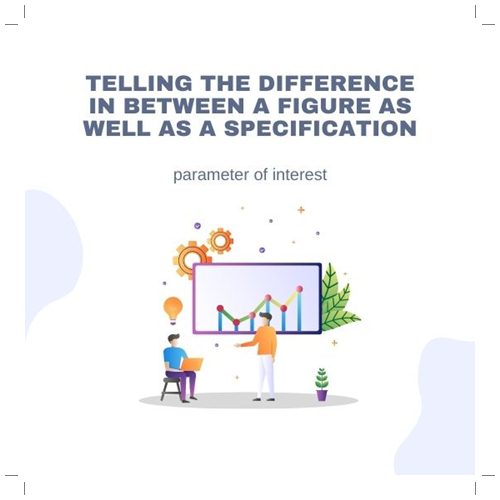
In statistics, a specification is a number that describes some quality of a population.
Table of Contents
Examples of parameters include:
Average population (for example, the average height of all people in the United States).
Percentage of population (for example, allocation of US residents who support a law).
Population variation (for example, variation in annual income among households in the US).
Since it is often too demanding and expensive to collect data on each component of a population, researchers will no doubt order a random sample of the people and use a sample statistic to approximate the population criterion.
For example, instead of collecting information on the annual income of each household in a specific state, scientists could collect data on 2,000 homes and use the median income of the families in the example to approximate the median income of families in the entire state Condition.
Parameter estimation from statistics
Using inferential data, you can estimate population parameters from sample statistics. Your sample should preferably represent your population and be randomly selected to make honest price quotes.
There are 2 crucial types of estimates you can make concerning the population criterion: spot price quotes and interval price quotes.
- A factor price quote is a single value price quote of a parameter based on a fact. For example, a sample mean is a point estimate of the population mean.
- A range price quote provides you with a range of values where the criteria are expected to exist. A confidence period is the most common type of interval quote.
Both types of estimates are essential to get a clear idea of where a parameter is most likely to be found
- Advanced parameters – Calculation of passion transaction by transaction.
- Trigger and define interest rate calculations on master journals.
- The following additional options are now available:.
- Now you can have Multiple Interest Rates.
- You can override the advanced parameters during receipt entry. Therefore, each Access can have multiple parameters.
- Balance Selection: All balances, credit score balances, debit balances only.
Applicability:
In fact, this applies to the display of the declaration and not to the collection of parameter of interest.
Calculate From: You can determine whether the interest rate will be charged from the Expiration Day or from the Effective Day of the transaction (or the coupon day if the effective day is not activated) or perhaps the Date varieties specified during Access to the voucher.
Choice of Techniques for Rounding off Interest Rate Amounts
What is the specification of interest in a figure?
The Passion Specification on the meaning of the data is clarified below.
In math, a parameter in an equation refers to something that comes in the formula. It’s a different point in the stats.
The passion criterion in statistics is a number that gives you data about people. It is also the opposite of data and can provide information about a small part of the population.
Read More : How to fix no path error on Discord
Common errors in determining the size of the sample
Some researchers stop working on accounting for a margin of error with their data quotes that affects the final assessment of the sample size.
If the objectives and goals of your research study are not spelt out, the choice of sample size may be affected.
Using an incorrect estimate for your standard deviation can lead to having an example dimension that is too small or too large.
Choosing a target population with little or no variants can miss several sample size subgroups and influence the collected reactions.
Exactly how to discover the experience structure for your research
A sampling frame is a list of the various parameters that you want to examine in your interest rate population. Whenever possible, the sampling structure includes the exact name of each person or small thing that your investigation would explore.
How does a sampling frame vary from the size of the data sample? While the information example dimension only tells you the number of people you need to collect feedback from, a test framework gives you specific details about who these people are, where you can locate them, and other demographic information. For example, your example dimension might be 350, while the tasting frame is the list of all African-American ladies at San Francisco College.
A sensible tasting framework aims to provide a bird’s-eye view of what goes into your systematic investigation and the critical things you should miss. Depending on the type of research study, you can produce alphanumeric labels for the various variables and specifications in the structure.
So how exactly do you create a tasting framework for your research? First, you should have done the history work to establish your passion population, the population specifications, and sample size.
Next, list all variables (people or other research study subjects) included in the target population. If you are a study flower, you should list all flower species found in the target geographic area.
In your tasting frame, include contact information, map area, or other information that might help you locate the different units on your checklist. You can also add the group data of the different variables in the structure.
Omit any variable’s details that are not part of your target population. Organize all the details in a systematic and also sensible order. Don’t forget to add alphanumeric or numeric labels for all units in the structure.
Leave a Reply